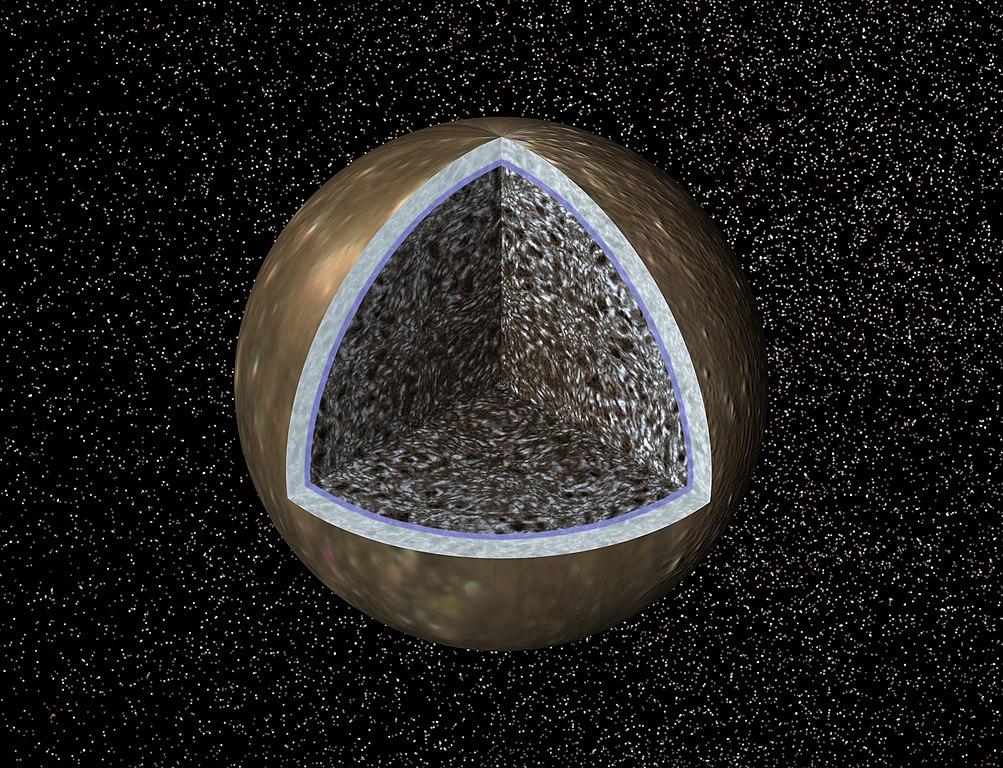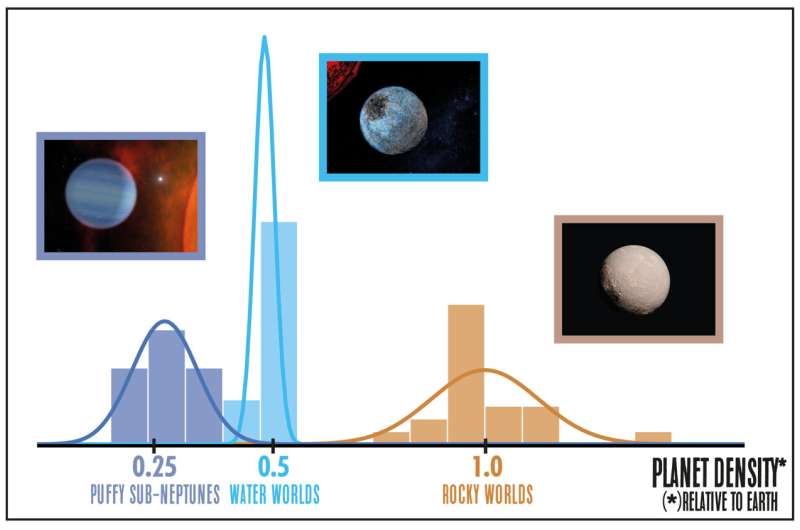Scientists have studied planets orbiting M-class stars and concluded that most of them contain large amounts of water. But these are not oceanids with a developed hydrosphere, but more exotic worlds.

Water worlds of red dwarfs
Stars of spectral class M, most of which belong to red dwarfs, are the most common type of luminaries in the universe. Most of the discovered exoplanets orbit around them. An example here is the TRAPPIST-1 system, in which there are as many as seven pieces.
A group of scientists from the Institute of Astrophysics of the Canary Islands and the University of La Laguna decided to collect statistics on what the worlds rotating around them look like. Currently, there are several ways to identify exoplanets, the most common are Doppler and transit methods.
The Doppler method makes it possible to see behind the displacement of absorption lines in the electromagnetic spectrum when a star is swinging due to the planet rotating around it. It can be used to determine the mass of a star.
The transit method involves measuring the brightness of a star when a planet passes between it and the Earth. It can be used to determine the radius of a celestial body. Knowing the radius and mass of a distant world, you can imagine what it is.
Determination of the density of exoplanets
There are not so many exoplanets observed simultaneously by the transit and Doppler method. But scientists have managed to find 43 such worlds. This gave them good statistics on their density. It turned out that in an unexpectedly large number of them, it is not enough for them to consist of one stone and metals.
Scientists believe that these are water worlds. A significant part of their mass is the substance that provides life on Earth. Until relatively recently, findi it outside the Solar System was a sensation. But now everyone is starting to get used to the fact that it is a common phenomenon.
Water worlds, but not oceanids
However, when astronomers talk about “water worlds”, they mean the so-called “oceanids“. As a rule, these are super-Earths covered with an ocean several tens or even hundreds of kilometers thick. But in this case, we are not always talking about such planets.

The fact is that a significant part of them are very close to their stars. And if there was an ocean on their surface, it would quickly go into a state of superheated gas. The planet’s atmosphere has swollen and observers on earth would have noticed it.
But there is nothing like that. Therefore, scientists have proposed a different model of these worlds. They are a chaotic mixture of rock and ice that can remain rigid even close enough to the star. This idea is quite consistent with modern ideas that many planetary bodies form away from their stars, and then migrate closer to them.
According to phys.org
Follow us on Twitter to get the most interesting space news in time
https://twitter.com/ust_magazine
